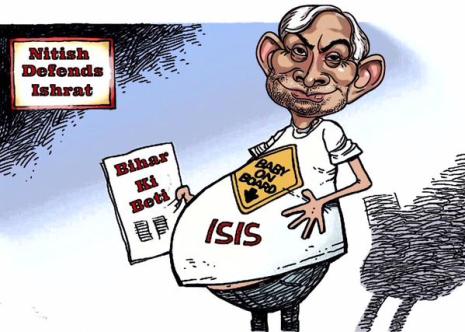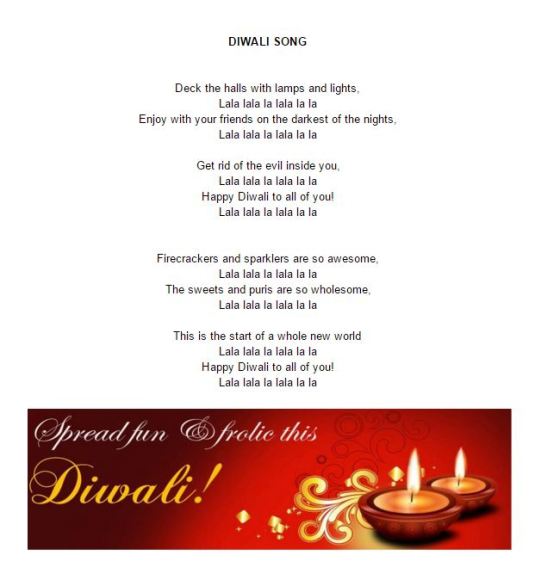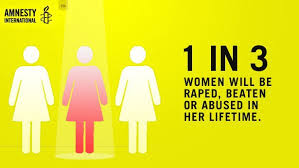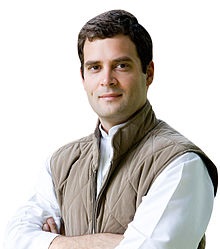I do not agree with what you have to say, but I’ll defend to the death your right to say it.
– Voltaire
I must admit that I am not a regular movie buff. I see very few Hindi or Bangla or English movies per year. I was interested in seeing PK though after reading about it online – about the film being a revolutionary one, that delivered its message in a hilarious manner, leaving one to ponder upon some deep questions about religion and concept of God.
My takeaway?
PK is a film with an outstanding packaging but with a very superficial look at the issues it raises. My problem with the movie PK is not in what it showed; it is in what it did not show…rather did not dare to show!
Don’t get me wrong. I did like most of the movie; loved the funny scenes dealing with the idiosyncrasies of our world, confusion about language, sex, dress, religion. We humans are indeed a confused and confusing lot! We knew that already, didn’t we? But it is always refreshing to see ourselves from an alien’s point of view. I also liked several things about the movie: Mr. Perfectionist Khan’s adorable Bhojpuri act; superb acting by the support cast; Hirani’s treatment of a challenging subject through humor, lovely music; the points the movie makes about rogue Godmen duping people in the name of God, about veneration of Gandhi only when he comes in the form of money, about people urinating/defecating everywhere else except at places of worship, about taking the name of God only in difficult times and so on.
But here’s what I didn’t quite reconcile myself to.
Not an honest film: What constitutes an honest film/ book/ debate/ art? That you show, or at the very least, touch upon both the good and bad aspects of a particular topic. Now I agree that a film is an art of fiction; it is just another story to be told. But an Aamir Khan movie that usually comes with a message, that tomtoms itself as holding a mirror to the society should have at least pretended to present a balanced view. If you are going to be preachy, you are expected to adhere to the standards you are preaching about. Isn’t it ironic that a film that attempts to bring out the dishonesty of Hindu godmen itself does not honestly show at least one voice of reason, one redeeming Hindu character in the entire 150 minutes of its length?…Which brings me to the next point.
One-dimensional: All the characters are one-dimensional. There are only black and white characters in the movie..no shades of grey. So much unlike life! It shows only a Hindu Godman as a villain, but there’s no other Guru who can soothe PK. There are Pakistani people that are sugary-sweet in their behavior towards the Hindu girl, but no glimpse of the extremism-hellhole that Pakistani society has allowed itself to descend into. There are Hindu parents objecting to marriage of their daughter to a Pakistani Muslim, but no real discussion on what their reasons could be. The Hindu followers are shown devoid of any mind of their own. The sole character that is shown to have any intelligence is the alien.
Just another film: There was nothing revolutionary, nothing earth-shattering in the film. May be I expected a bit too much from the movie after all the hype? But didn’t we have a whole lot of serials and movies in the 80s and 90s that showed the exact same thing – Godmen duping and instigating people in the name of God? Didn’t time and again we read in news about Godmen taking advantage of women or piling up obnoxious amounts of money? Didn’t our parents caution us many a time against falling for foolish and lazy paths to reach our goals (see the extra devotion by students just before exams)? PK is just old wine in new bottle, albeit, an attractive one.
Wrong religion: If the film was against organized religion as it was made out to be; well, it chose the wrong religion! Hinduism is as dogmaless as a religion can be. There’s no Pope, no Dalai Lama, no Imam in Hinduism whose diktat one has to follow. Hindus are free to choose between various concepts of God (Saakar-vs-Niraakar; Saguna-vs-Nirguna; Dvaita-vs-Vishishtadvaita-vs-Advaita; worshipping God in the form of mother, father, friend, lover, teacher, child or master; worshipping God with various names and forms as per one’s temperament). There are Hindu followers with all kinds of diets all over the world – from vegans to vegetarians, to lacto-ovo-vegetarians, to non-vegetarians, to beef-eaters). There are all kinds of books revered in Hinduism – Geeta, Ramayan, Mahabharat, Upanishads to name just a few.
There are all kinds of Hindus – from atheists to agnostics to theists. No follower is persecuted for their belief or lack thereof. Hinduism is perhaps the one and only religion that recognizes the different (emotional, reflective, intuitive, active) temperaments of human nature and one is free to follow any path(s) that best suits one’s abilities and nature – the paths of devotion/love (Bhakti), reasoning (Jnana), meditation (Raaja), action (Karma) – respectively for each of them. You are free to pick your own path and hardly anybody forces you to do one way or the other. You are responsible for your own actions and thoughts that eventually determine your destiny. Isn’t there a vast difference in the worldview of these two persons? Not as per PK, that paints everybody with the same brush.
Person A: ‘I love red apples and survive only on red apples. Not just that, you should also eat only red apples. (Not just that, if you don’t eat only red apples for the rest of your life, I’m going to kill/ rape/ maim/ shoot/ colonize/ enslave you)’.
Person B: ‘I love red apples; you can also eat red apples or daal-roti-mooli-cake-pie-biryani – whatever you want as long as you let me eat mine and take responsibility for the consequences of what you eat’.
Why am I bringing up all this? Because all the Hindu believers depicted in the film are shown blindly following their religion without any real understanding of why they are doing whatever they are doing (i.e. following Hindu rituals), without any real understanding of the higher philosophies.
Rationalism: The followers in the movie are seen having unfaltering belief in Tapaswee, who rules with an iron hand. It gives the impression that Hinduism does not brook dissent nor questioning. Nothing could be further from truth! Many great Hindu scriptures, starting from Geeta to Kathopnishad to Mundaka Upanishad are in the forms of dialogue. Questions and answers. Doubts and their resolutions. Arguments and their rebuttals. The very goal of life in Hindu philosophy is to know and experience one’s self. Note it is called Self-realization, not salvation or eternal damnation or reward/punishment by some Saviour or faraway God. Do your own search, experience by yourself to come to your own conclusion. It is almost akin to the scientific method, only much harder to achieve.
Swami Vivekananda and Ramakrishna each tested the other many times before accepting each other whole-heartedly. Sri Ramakrishna spent many years just testing different philosophies and paths to experience for himself what they meant and what they led to. Swami Vivekananda emphasized the need for reasoning in all his writings; In Swamiji’s own words, “I am sure God will pardon a man who will use his reason and cannot believe, rather than a man who believes blindly instead of using his faculties He has given him.” From Schrodinger to Einstein to Tesla to Carl Sagan, numerous scientists have appreciated the principles of Hinduism. If Science is the process of enquiry into the external world, Vedanta is the process of enquiry into our internal world.
Murti Puja: There are several scenes in which PK ridicules this. In one of the most poignant scenes in the film, PK is seen asking for help from Hindu deities – all of whom are deaf, of course! The scene could be interpreted in several ways – that of God not answering his prayers, that of PK getting tired of begging before God, or that of berating the Hindu practice of worshipping Murtis. And this is where OMG scores in my opinion. It gave the Gods a chance to answer back. 🙂 No such leniency in this Aamir Khan movie.
When Hindus worship Vigraha or Murti, we do not worship a stone/rock/metal that the Murti is made of. Rather we bow down to the energy of God in that particular form, the energy that comes only after Praan Pratishtha, not the Paan-pratishtha as done by PK in the movie (Praan = life-force, Paan = betel leaf). Why do that? To help you concentrate, to help you focus and to help you come to love God in a form that is easier to comprehend. It’s similar to why lovers separated by a distance used to carry each others’ photos in their wallets, in an era when there was no facebook, skype or whatsapp :-). Does that mean you love the paper the photo is printed on? No. It just helps you fondly remember your sweetheart when he/she is not around. At the same time, nobody’s going to shoot you if you don’t want to carry your beloved’s photo!
Need for temple-visits or pilgrimage: Another message is there’s no need for pilgrimage and temple-visits. I both agree and disagree. When we intend to study, we retire to a library, a study or a quiet place. We need to shut out the external noise and focus on our subject. It’s the same with spiritual practice. We need to go to a quiet place for meditation, for uplifting our soul, for connecting with the sacred. Especially, a Hindu temple is supposed to be constructed on the basis of special Vaastu that is supposed to elevate our consciousness from gross to the sublime. Note, Aamir Khan himself does not believe in real life in the lines he spouts in the film about not visiting places of pilgrimage.
We also have this concept of ‘मन चंगा तो कठौती में गंगा’ (If your heart is pure, even the crucible you have will hold the holy Ganga). It means, for a realized soul, there is no need for rituals. Sri Ramakrishna used to tell a story – “Suppose you want to go from Dakshineshwar to Calcutta and your friend has given instructions about the path in a letter to you. You follow the route, you sometimes even memorize the instructions carefully lest you forget them. But once you reach Calcutta, there’s no real need for you to keep on carrying the letter with you.” Like the letter in this story, rituals are just the means, not the end.
Need for a Guru: The central message of the film is that there is no need for mediators or business managers to communicate with God. Again, I both agree and disagree. Suppose you want to learn about a subject. What do we do? We turn to books or the library or Google/Wikipedia these days. That is perhaps sufficient to gain a certain level of competence. But what do we do if want to be a Ph. D or an expert in a field? We train under the best minds in that field; we get an adviser, a guide, a mentor. So it is with spiritual sciences. But even there, we have several examples such as Sri Ramakrishna in recent times, who realized God the first time without any Guru on the basis of sheer willpower.
What is erroneous is not the need for a Guru, but the way we search for a Guru! In an era where even a small piece of software or phone or any product is not user-accepted unless it undergoes rigorous system-testing, what makes us think we can accept any Tom, Daler or Hari as the Guru? Our own laziness of course, our tendency to look for quick-fix solutions to life’s problems. Finding a true Guru is many, many times more difficult than finding a needle in a haystack.
Marriage to a Pakistani: Of all the things I did not like in the movie, I found this to be the most objectionable and it is not even related solely to religion. If any of my Hindu male or female friends would have called from a faraway country to ask my advice on whether to get married to a Pakistani (where I had no way of knowing that person personally), I would have given him or her the same advice as Tapaswee did in the film, though not for the same reasons. (I admit I did not like it too much coming out of Tapaswee-ji’s mouth. 🙂 But hey, don’t kill the message due to the messenger!).
The very birth of Pakistan was rooted in fear and hatred for the Hindu way of life. How can I advise any Indian Hindu friend (even Muslim ones for that matter) to get married to someone who has not been brought up in an open multicultural society like India’s? How can a liberal Indian girl used to wearing miniskirts and shorts be with someone who may as well have learned the alphabet thus – A अ for Allah, B ब for Bandook (I’m not kidding; see this and this ) ? It is bound to lead to marital tensions in the long run, not to speak of a possible sinister plot of using you against your own country. A clear case of conflict of interest. In an age where bombs go off left, right and center every other day in Pakistan, where even Muslim kids are not spared by the Islamic radicals, where even Pakistanis have to pose as Indians due to the bad name given by their extremists – how can anyone in their right minds advise a friend to marry someone from or possibly live in a country, termed as the epicenter of terrorism? What’s the probability of her being converted, being made to wear the Burqa, being ruled by the Shariat? Entire generations of Pakistani people have been taught to develop, and I quote, “prejudice, bigotry and discrimination toward women, religious minorities, and other nations, especially India”. Remember, love is blind, but marriage is a life-long commitment. And marriage without shared values is a recipe for disaster. Being liberal and progressive does not mean sacrificing basic common sense on the altar of political correctness. It is not jingoism; it is called self-preservation. Even animals with limited intelligence practice it.

Understandably, the makers of the film took some calculated risks and targeted only Hindu practices. They knew very well that it will generate just the right amount of controversy and attract revenue, without causing serious damage. Some wannabe-liberals termed the protesters as the Hindu Taliban. Really!? A more-than-2 hours Indian film by one of the top actors that targets the majority religion goes on to become the highest grossing film in Hindi film industry; while cartoonists in France at a not-so-mainstream newspaper that targets a minority religion there get murdered in broad daylight. Events speak louder than words. The last time I checked, India was still a democracy. Just as the filmmakers have exercised their right to freedom of expression by making this movie, the protesters have a right to oppose it by filing legal suits or calling for a boycott or coming out on streets. What they do not have, of course, is the right to violence. Personally, I do not consider boycotting of a film or banning of a book the solution to anything.
So, do I think films like PK should be made? Absolutely!
Gives us a chance to introspect, to correct, to separate the wheat from the chaff.
At the same time, do I wish PK had been a well-made, well-rounded film? Absolutely!
Gives us a chance to write blogs like this. May be, just may be, films like these in future will be unbiased.
निंदक नियरे राखिये, आँगन कुटी छवाय |
बिन पानी, साबुन बिना, निर्मल करे सुभाय ||
(Keep your critics near you, even making their dwellings in your own courtyard. Without the use of soap or water, they will cleanse your nature. )
– Kabeer














